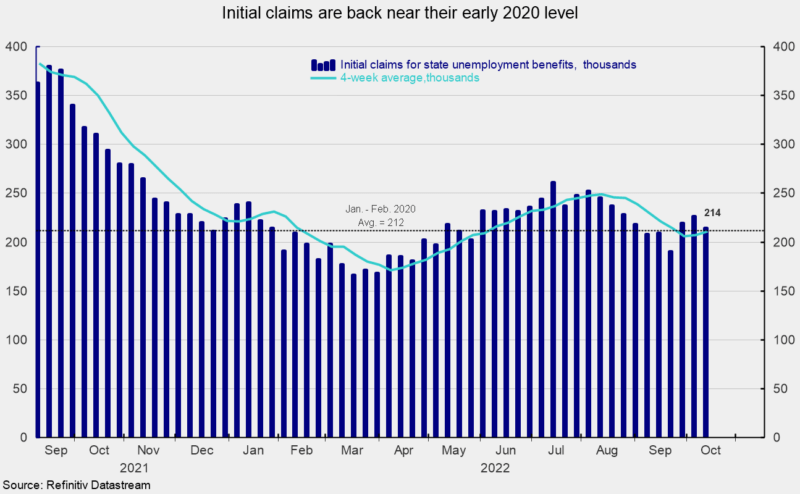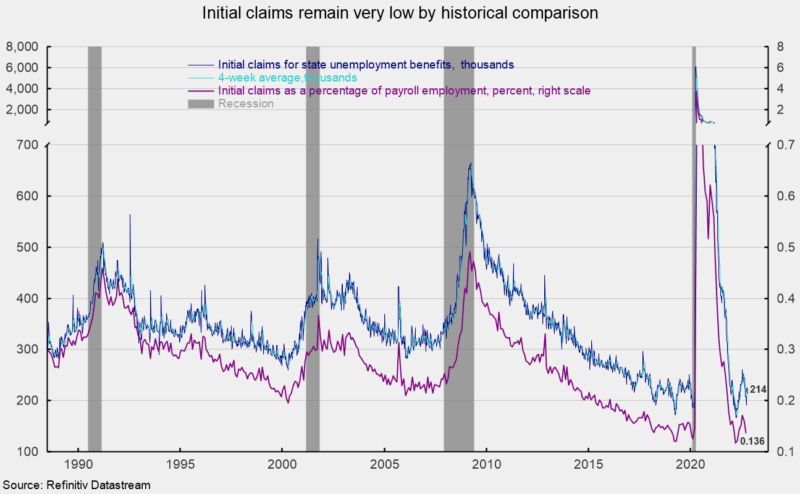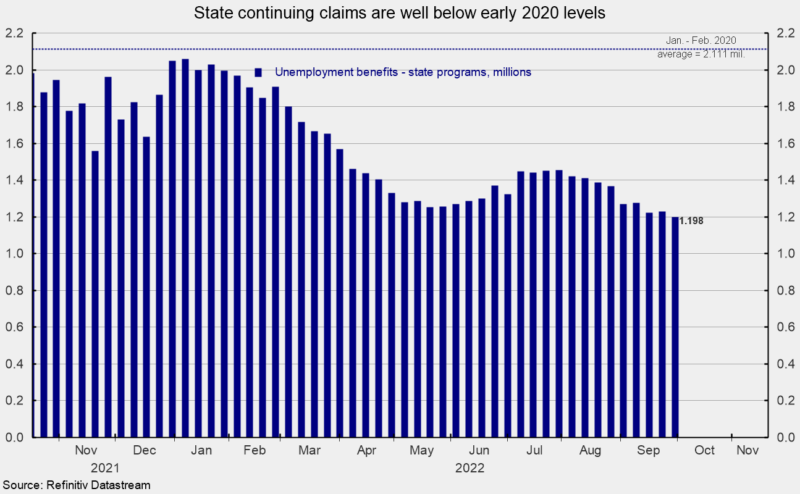Initial claims for regular state unemployment insurance fell by 12,000 for the week ending October 15th, coming in at 214,000. The previous week’s 226,000 was revised down from the initial tally of 228,000 (see first chart). Claims have fallen for seven of the last ten weeks. When measured as a percentage of nonfarm payrolls, claims came in at 0.136 percent for September, down from 0.160 in August but above the record low of 0.117 in March. Overall, the level of weekly initial claims for unemployment insurance remains very low by historical comparison (see second chart).
The four-week average rose to 212,250, up 1,250 from the prior week. After showing an upward trend since a low in early April, the four-week average peaked in early August and trended lower through the end of September but has risen slightly since the low. Overall, the data continue to suggest a tight labor market. However, continued elevated rates of price increases, an aggressive Fed tightening cycle, and fallout from the Russian invasion of Ukraine remain risks to the economic outlook.
The number of ongoing claims for state unemployment programs totaled 1.198 million for the week ending October 1st, a drop of 31,728 from the prior week (see third chart). State continuing claims had been trending higher from mid-May through the end of July but are now trending lower over the last few weeks (see third chart).
The latest results for the combined Federal and state programs put the total number of people claiming benefits in all unemployment programs at 1.224 million for the week ended October 1st, a decrease of 30,879 from the prior week. The latest result is the thirty-fourth week in a row below 2 million and the lowest of the post-lockdown-recession recovery.
While the overall low level of initial claims suggests the labor market remains solid, a sharp drop in the number of open jobs raises some concern. The tight labor market is a crucial component of the economy, providing support for consumer spending. However, persistently elevated rates of price increases already weigh on consumer attitudes, and if consumers lose confidence in the labor market, they may significantly reduce spending. The outlook remains highly uncertain.
* This article was originally published here
PUBLISH WITH US!
The Washington Gazette works at our discretion with businesses, non-profits, and other organizations. We do not work with socialists, crony capitalists, or disinformation groups. Click the green button below to view our services!
HELP STOP THE SPREAD OF FAKE NEWS!
SHARE our articles and like our Facebook page and follow us on Twitter!






0 Comments